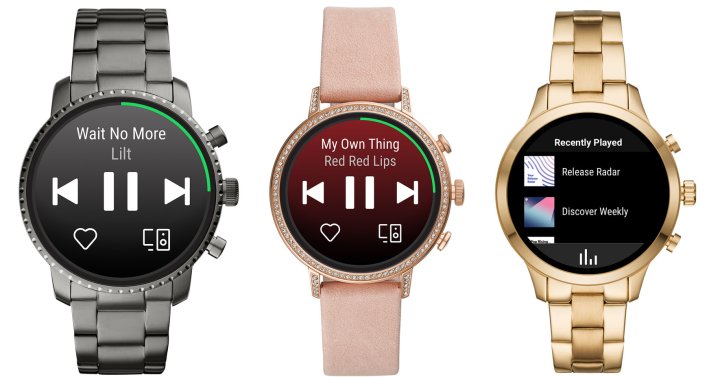
After what has seemed like a long time coming, Spotify will be available on Wear OS smartwatches as an app. Whether it’s on a run or a while lounging at home, you will now be able to access your music right from your wrist — without having to constantly reach for your smartphone.
Currently, those who want to use Spotify while working out with their WearOS smartwatch are limited in terms of what they can access. Whenever you pull up the music app on your phone, you’ll see the name of the song and the artist but the only actions available are the music controls.
With the new Spotify app for WearOS, you will be able to do a bit more. For starters, you have access to your recently played songs and podcasts, you can browse through playlists, skip tracks, pause, play, and go back to previous songs using only your smartwatch. You will also be able to tap on the heart icon to mark your favorite tracks, which the app will save it to your library.
“We’re excited to bring improved on-the-go-access to your favorite music and podcasts to millions of Spotify users on Wear OS by Google smartwatches,” Mikael Ericsson, senior product director at Spotify, said in a press release. “Being able to easily access, control, and connect music directly from your wrist opens up a world of new opportunities. We look forward to continuing to improve the Spotify experience in this space.”
In addition to your workouts, you can also use your smartwatch to control music on devices at home like your speakers or TV with Spotify Connect. As long as you connect the home device to the same Wi-Fi network and log into the Spotify app, it will appear under “Devices Available.” On your smartwatch, you will be able to select the device you want to connect and your audio will automatically begin to play.
The news comes only a short while after Garmin announced its Spotify integration for the Fenix 5 Plus Series smartwatch. But one additional feature on the Garmin 5 Plus Series (that WearOS users don’t have quite yet) is the ability to listen to music offline through the Spotify app. Since Garmin watch comes with 16Gb of onboard storage, users are able to sync their playlists using the phone’s Wi-Fi connection.
The Galaxy Smartwatch also includes Spotify integration, a new timepiece Samsung launched last month. With the smartwatch, users can also download, play, and control their playlists from the app.
It’s possible that the ability to listen offline will be introduced in a future update. But since many WearOS smartwatches are known to come with 4GB of storage, — which doesn’t leave that much room to download content — users might prefer to stream their music.
Spotify also announced that it partnered with Fossil Group to bring the streaming service as a stand-alone app for Wear OS. In November, the Spotify app will be automatically installed on Fossil Generation 4 smartwatches and the Michael Kors Access Runway collection.
As for global availability for all WearOS smartwatches, the Spotify app will be rolling out to users over the coming week. It will be available for download through the Google Play Store.


